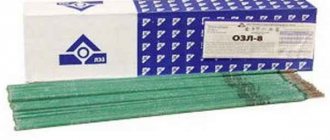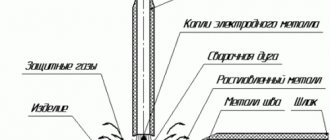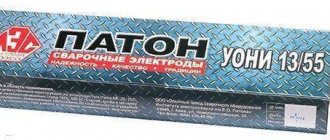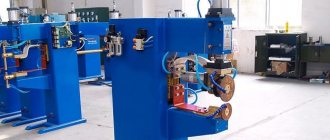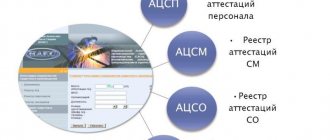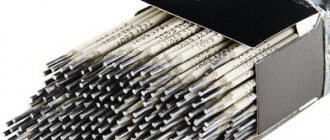Sooner or later, any manufacturing enterprise may require confirmation of the qualifications of working personnel and approval of welding processes. This event is called certification, and it is necessary both for welders and for all workers in the production workshop. Welding technology certification is usually carried out by NAKS (National Welding Control Agency). It has many important nuances and features that must be taken into account during the process.
Features of certification
Certification is an important and secondary stage for large industries and enterprises. First of all, welding is certified. NAKS determines which technologies will be used in a particular production, the agency makes a conclusion and gives permission for the work being carried out. For this reason, it is very important to approach the preparation process with full responsibility.
In order for welding certification to be carried out under the supervision of NAKS, authorized employees of the enterprise collect the required documents and independently submit an application. Afterwards, a commission arrives at the production site and conducts an audit.
During the inspection, the commission takes into account compliance with the following requirements:
- sufficient amount of equipment at the plant;
- no problems with staff;
- compliance with important norms and rules - labor, fire safety and others.
It is worth noting! The commission operates in accordance with special regulatory documents. In accordance with them, it makes basic requirements for production institutions.
Certification of welding production by NAKS is a mandatory event that is carried out at every high-risk production enterprise. This is the law that all official proceedings must adhere to. A study is also carried out on the suitability of the technologies used. The commission must ensure that the equipment used can produce products that meet all qualities and standards.
The purposes of obtaining NAKS certificates for electrodes and the obligatory nature of such obtaining
The main purpose of obtaining a NAKS certificate of conformity for electrodes, that is, supporting documents based on the results of the certification, is to establish compliance of the performance characteristics of welding materials in the form of electrodes with the declared characteristics specified in the accompanying documentation, as well as in special technical regulations and GOSTs on the basis of which they They were designed. In addition, the certificates of conformity issued based on the results of certification establish the conditions under which certain welding materials can be used, for example, when repairing lifting and transport devices or in the repair of oil and gas production equipment, and whether it is possible to use them in such conditions, that is, on objects of increased industrial danger.
The requirement for certification is due to the fact that only welding materials, including electrodes, that have passed this procedure can be used for various types of work, including repair and reconstruction of “high-risk facilities” (this name is adopted in all NAKS certification documents) .
Certification to obtain a certificate of conformity for electrodes, as well as other welding materials, is carried out on the basis of a special regulatory document - “Procedure for the use of welding materials in the manufacture, installation, repair and reconstruction of technical devices for hazardous production facilities” (RD 03-613-03 ). If the submitted samples comply with the stated requirements and characteristics, the result is the issuance of a certificate of conformity, which serves as a certificate of certification for a period of three years, after which a new certification test will be required.
Types of certification
Certification of welding technologies under the control of NAKS is carried out in several stages. Each type of this procedure has certain features and nuances that are important to study in advance. This will help you avoid unpleasant problems in the future.
The main types of NACS studies include:
- research _ This type of audit is carried out under the control of legislation. Activities are required to confirm compliance or detect non-conformity of the properties of completed welds made of metal or plastic material. Research certification of welding materials and welding works consists of several stages;
- production _ Certification under the control of NAKS of welding materials and welding is required to control any enterprise whose activities are aimed at installation and repair in areas with high danger. Production revision of welding technology under the control of NAKS is usually divided into subtypes - primary, periodic and extraordinary.
Important! Extraordinary NAKS certification of welding materials and welding can be carried out at the request of the company itself, represented by its process control department. It is usually performed when violations of an organization's security rules are detected.
Technology certification
The NAKS register includes welding materials and technologies with a high degree of danger, which, according to the legislation of the Russian Federation, cannot be used without certification. The audit is carried out by the National Welding Control Agency.
Among the most dangerous objects of the organization that are used in production are:
- elements with an oxidizing effect that can support combustion processes;
- gas mixtures with rapid ignition;
- toxic elements with chemical and biological composition;
- components that have a negative impact on the environment;
- melts of ferrous and non-ferrous metals.
Welding work at these facilities is permitted only after passing a welding technology test. The NAKS Center conducts an audit of the quality of welding works using practical research methods.
If the technology is being used for the first time or it has undergone some changes, then an initial check will be required. Every 4 years, production establishments must undergo periodic audits. Also, verification is required if the technology has not been used for a year.
Main brands of electrodes certified by NAKS
In order to obtain comprehensive information about which electrodes have passed the NAKS certification and received certificates of conformity, as well as find out the details of such certificates, including their validity periods, you can refer to the NAKS register.
To obtain information, you can log on to the official website of the National Welding Control Agency and go to the “Welding Production Certification System” section. The menu in this section will allow you to enter the subsection “Certification of welding materials”, where a special register is located. In this register you can obtain all the necessary information about welding materials that have passed official certification.
In order to clarify information about whether a specific brand of electrodes has passed certification, you need to know the type of electrode being tested, as well as its brand or manufacturer. If information about the brand and manufacturer is unknown, you will have to search manually through a list of five hundred items.
Currently in the Russian Federation there are such brands of electrodes that have passed the official certification of NAKS and have special certificates of conformity:
- ZIO-8 (certified for use in the construction, overhaul and reconstruction of gas equipment (GO), boiler equipment (BO), metallurgical equipment (MO), oil and gas production equipment (OGDO), equipment for the transportation of dangerous goods (OTOG), equipment chemical, petrochemical, oil refining and fire and explosion hazardous industries (OHNVP);
- TsL-11 (certified for use in the following types of production industries: GO, KO, MO, NGDO, OTOG, OKHNVP);
- UONI-13/55 (they can be used in the following industrial sectors: repair and construction, as well as reconstruction of mining equipment (GDO), GO, KO, MO, NGDO, OTOG, OKHNVPO, hoisting and transport equipment (HTE), building structures ( SK);
- SZSM-03 (can only be used at OGDO subject to certification in accordance with the technical regulations of PJSC Gazprom; if the certification was carried out for use in accordance with special conditions of use, then it can be used in production areas: GDO, GO, KO, MO , NGDO, OTOG, OKHNVP, PTO, SK);
- SZSM-02 (areas of application are determined in the same way as for electrodes of the SZSM-03 brand);
- SZSM-46.00 (used in the areas of GDO, GO, KO, MO, NGDO, OTOG, OKHNVP, PTO, SK);
- SZSM-01K (areas of application are determined in the same way as for electrodes of the SZSM-03 brand);
- OZS-12 (application occurs in the areas of GDO, GO, KO, MO, NGDO, OTOG, OKHNVP, VET, SK);
- MR-3 (used in the areas of GDO, GO, KO, MO, NGDO, OTOG, OKHNVP, PTO, SK);
- MR-3S (use is permitted in the areas of PTO, KO, GO, NGDO, OKHNVP, GDO, MO, OTOG, SK);
- UONI-13/45 (used in the areas of VET, KO, GO, NGDO, OKHNVP, GDO, MO, OTOG, SK);
- UONI 13/45a (allowed to be used in the areas of GDO, GO, KO, MO, NGDO, OTOG, OKHNVP, PTO, SK);
- TMU-21U (they are used in the areas of GDO, GO, KO, MO, NGDO, OTOG, OKHNVP, VET, SK);
- TsU-5 (these types of electrodes can be used in the following areas of creating hazardous production facilities: GDO, GO, KO, MO, NGDO, OTOG, OKHNVP, PTO, SK);
- OZL-6 (application is possible in the areas of civil defense, civil defense, military defense, NGDO, OKHNVP, OTOG);
- OZL-8 (electrodes of this brand are used in the fields of GO, KO, MO, NGDO, OKHNVP, OTOG);
- OZL-17 (application occurs in the following areas: GO, KO, MO, NGDO, OTOG, OKHNVP);
- NZh-13 (application is possible in the areas of civil defense, civil defense, military defense, NGDO, OKHNVP, OTOG);
- EA-400/10U (electrodes of this brand are used in the fields of CO, GO, NGDO, OKHNVP, MO, OTOG);
- TsT-15 (these electrodes are used in the areas of civil defense, KO, MO, NGDO, OKhNVP, OTOG);
- TsN-6L (depending on the diameter, they can be used in KO, OKhNVP, GO, NGDO);
- TsL-39 (the use of this brand of electrodes is possible in the areas of CO, MO, NGDO, OKhNVP);
- EA-395/9 (used in the areas of civil defense, civil defense, NGDO, OTOG, OKHNVP);
- UONII-13/55 (their use is possible in the areas of construction, major repairs and reconstruction of steel bridge structures (KSM), SK, GDO, GO, KO, MO, NGDO, OTOG, OKHNVP, PTO, SK);
- TML-1U (these electrodes are used in the areas of CO, MO, OKHNVP);
- TML-3U (application possible in the areas of CO, MO, NGDO, OKHNVP);
- EA-359/9 (used in the areas of CO, MO, OKHNVP, SK);
- UONII-13/55R (the use of this brand of electrodes is possible in the areas of GDO, GO, KO, MO, NGDO, OKHNVP, PTO, SK).
The grade of the electrode is assigned depending on the purpose of its use, as well as on the metal for welding or surfacing of which it is intended as a welding material. During certification, the material from a specific plant is checked. The same certified brands of electrodes can be produced by different factories, both Russian and foreign, as noted in the certificates of conformity issued by the National Welding Control Agency represented by its certification centers.
Algorithm
In order for industrial institutions to pass the certification test, the personnel must include at least one third-level welding specialist and at least two welders. They must be certified, they must have supporting documentation.
To obtain a NAKS certificate of certification of welding technology, you must submit documents from the enterprise that manufactures the product. An application with documents is submitted to the supervisory authority.
To obtain a certificate of certification of welding materials and technologies, you need to collect documents from the list below:
- Articles of association.
- Diagrams of the location of pipe communications and welding equipment in the production workshop.
- An agreement concluded with a laboratory that controls the quality of welds at the enterprise.
- It is imperative to collect all certification documents for the welding equipment used, for metals and other materials used to manufacture products.
- NAKS certificates of all employees, they must indicate the level of qualifications.
If all documentation is in perfect order, then the production organization will be allowed to audit. Specialists must draw up a plan indicating all the important criteria that are taken into account during production. If the production establishment passes the inspection, a certificate is issued that is valid for 4 years.
The certificate of certification of welding materials and technologies received by NAKS is considered confirmation that the organization has passed the necessary checks and complies with the standards. It must prove that the production employs highly qualified specialists, the workshop is equipped with the required equipment and materials, which have also been certified.
Welding electrodes, buy ESAB OK 46
Welding electrodes ESAB
OK 46.00 (Universal welding electrodes ESAB OK 46.00).
Mistakenly called
E
SAB OK 46.00
Rice. 1. OK 46.00 ESAB
It is no secret that to ensure the welding process, it is necessary to have not only a modern welding machine, but also high-quality consumables that will be able to work together as well as possible. The main consumables for welding are welding electrodes.
One of the most popular rutile-cellulose welding electrodes is the OK 46 series electrode from the manufacturer ESAB.
ESAB electrodes are attractive due to their versatility and great capabilities. The nomenclature allows you to select consumables for a specific task. Electrodes are used for surfacing and applying basic seams, as well as for tack welding. These electrodes can be used for joining parts with large gaps. They provide high quality welds, have low sensitivity to metal contamination, are economical in consumption, and are suitable for welding both thick- and thin-walled fragments, as well as structures exposed to aggressive influences. Products, even with slight heating, can produce a seam of high viscosity. The next advantage is resistance to corrosion and cracks, the ability to weld parts in any position, while maintaining high quality of the seam and not causing large stresses. They are convenient to work in hard-to-reach places. Electrodes are used in products with heavy load during operation, increased requirements for strength and impact strength. The main advantage of the product is its ease of use for beginners and experienced welding professionals, as well as safety in operation.
Used in working with low-carbon and low-alloy steels.
Advantage of
ESAB (ESAB) OK 46.00:
- High performance
— Low sensitivity to contaminated surfaces
- Easy to set on fire
— Work at low currents with a stably even arc
— Welding in the vertical position downhill
- Price-quality ratio
Welding position with
ESAB OK 46.00 electrode (Fig. 2):
Fig. 2
These electrodes can be purchased
in diameter:
— 2.0mm.
Marking OK 46.00 2.0x300mm 1/2 inner, Article: 4600202WD0
— 2.5mm
. Marking OK 46.00 2.5x350mm, Article: 4600253AM0
— 3.0mm
. Marking OK 46.00 3.0x350mm, Article: 4600303AM0
— 3.2mm
. Marking OK 46.30 3.2x350mm, Article: 4630323400
— 4.0mm
. Marking OK 46.00 4.0x350mm, Article: 4600404AM0
— 5.0mm
. Marking OK 46.00 5.0x350mm, Article: 4600504AM0
Mechanical properties of
ESAB
Shielding gas - ISO
Tensile strength –400MPa
Tensile strength – 510MPa
Elongation – 28%
Numerous tests of analogues
(rutile coated electrodes) showed that ESAB remains the leader to this day.
Useful information for calculating the logistics of
ESAB OK46.00
| vendor code | Manufacturer country | Nomenclature | Nomenclature. Russian name | In production / Discontinued | Package weight, kg | Pallet weight, kg |
| 4600202WD0 | Russia | OK 46.00 2.0 x300mm 1/2 inner | Welding electrodes OK 46.00 2.0x300mm, 2 kg | Produced | 2 | 640 |
| 4600202WM0 | Russia | OK 46.00 2.0 x300mm | Welding electrodes OK 46.00 2.0x300mm | Out of production | 4,5 | 720 |
| 4600253AM0 | Russia | OK 46.00 2.5 x350mm | Welding electrodes OK 46.00 2.5x350mm | Produced | 5,3 | 954 |
| 4600253WM0 | Russia | OK 46.00 2.5 x350mm | Welding electrodes OK 46.00 2.5x350mm | Out of production | 5,3 | 954 |
| 4600303AM0 | Russia | OK 46.00 3.0 x350mm | Welding electrodes OK 46.00 3.0x350mm | Produced | 5,3 | 954 |
| 4600303WD0 | Russia | OK 46.00 3.0 x350mm 1/2 inner | Welding electrodes OK 46.00 3.0x350mm, small package 2.5 kg | Produced | 2,5 | 900 |
| 4600303WM0 | Russia | OK 46.00 3.0 x350mm | Welding electrodes OK 46.00 3.0x350mm | Out of production | 5,3 | 954 |
| 4600323210 | Sweden | OK 46.00 3.2 x350mm 1/2 inner | Welding electrode OK 46.00 3.2x350mm 1/2 inner | Produced | 990 | 990 |
| 4600404AM0 | Russia | OK 46.00 4.0 x450mm | Welding electrodes OK 46.00 4.0x450mm | Produced | 6,6 | 950,4 |
| 4600404WM0 | Russia | OK 46.00 4.0 x450mm | Welding electrodes OK 46.00 4.0x450mm | Out of production | 6,6 | 950,4 |
| 4600504AM0 | Russia | OK 46.00 5.0 x450mm | Welding electrodes OK 46.00 5.0x450mm | Produced | 950,4 | 950,4 |
| 4600504WM0 | Russia | OK 46.00 5.0 x450mm | Welding electrodes OK 46.00 5.0x450mm | Out of production | 6,6 | 950,4 |
| 4630253400 | Sweden | OK 46.30 2.5 x350mm | Welding electrodes OK 46.30 2.5x350mm | Produced | 15 | 990 |
| 4630323400 | Sweden | OK 46.30 3.2 x350mm | Welding electrodes OK 46.30 3.2x350mm | Produced | 15,9 | 1 049,4 |
| 4630404400 | Sweden | OK 46.30 4.0 x350mm | Welding electrodes OK 46.30 4.0x350mm | Produced | 20,1 | 984,9 |
| 4630504400 | Sweden | OK 46.30 5.0 x450mm | Welding electrodes OK 46.30 5.0x450mm | Produced | 18,9 | 926,1 |
*Boxes of three electrodes are additionally packed in corrugated cardboard boxes if the products are imported from Sweden. For large quantities, products are supplied in sealed wooden boxes or pallets covered with shrink film with different loading patterns and different weights. Thanks to the multi-level protection used when packaging products, welding electrodes OK 46.00 are reliably protected from damage, shock and mechanical impact during movement and transportation . The packaging of the electrodes also protects against moisture.
History of the electric welding company
ESAB
At the beginning of the 20th century in the city of Gothenburg, the Swedish scientist Oscar Kjellberg founded the ESAB company, ElektriskaSvetsnings - Aktiebolaget. The ESAB company produced, developed by the scientist, welding products necessary for the shipbuilding industry.
Today, The ESAB Group is part of the American company Colfax Corporation, with 8,400 employees operating in 80 countries. 26 production facilities are involved in the production of products, two of which are located in Russia.
The ESAB-SVEL plant in St. Petersburg was founded in 2000, producing both Russian brands of electrodes and OK brands of electrodes owned by ESAB. And in 2011, the Sychevsky Electrode Plant, Tyumen, joined TheESAB Group.
ESAB is the number one partner for welding consumables.
Always in stock
at the UralSvar warehouse.
To buy
:
-Contact our manager by phone +7(343)344-83-67
-Send your application by email
-Place your order on the website.
We supply electrodes to: Ekaterinburg (Sverdlovsk region), Chelyabinsk (Chelyabinsk region), Ufa (Res. Bashkortostan), Tyumen (Tyumen region), Perm (Perm region), Nyagan, Khanty-Mansiysk (Khanty-Mansiysk Autonomous Okrug (KhMAO)), Kurgan (Kurgan region) and other regions of the Russian Federation.
Employee certification
Certification of welding production specialists by NAKS is a mandatory procedure that must be carried out in production. It should be carried out in different situations - during changes in welding technology, during advanced training, during a short-term cessation of activity of one or more employees. But you definitely need to consider the main nuances of employee certification.
How is certification carried out?
To undergo certification, the employee must independently come to the NAKS center. The center conducts examinations, based on the results of which the person being checked is given an identification document. He assigns him the necessary degree of qualification. It can also be used to confirm a previously assigned qualification level.
For the test result to be valid, the following requirements must be met:
- The first step is to draw up an application; you can use a sample for this. Afterwards it must be submitted to a specialized certification center.
- The application must be accompanied by the required documents - copies of the identity card of the person being checked, diploma, documents including certificates of certification for welding-related professions, copies of the work book, employment orders. Photos taken in accordance with NAKS requirements.
- At the next stage, the time and place of the inspection is agreed upon. Certification of welding and workers under the control of NAKS are sent to training, which is based on a specialized program and an exam on knowledge of the required material.
- Passing final exams to confirm qualifications. There are usually two of them - practical and theoretical. But training must be done first.
- If all exams are passed successfully, the employee is issued a certificate of assignment of a certain level of qualification or renewal of an existing certificate.
It is worth noting! Applications can be submitted from legal entities, namely from an enterprise, as well as from an individual in situations where the welder has decided to apply for inspection independently.
If the welder’s documents are in full order, they are allowed to take the exams. There are only two of them - practical and theoretical. The second includes knowledge of the theory of welding, namely its technologies, principles of conduct and other important nuances. Practice comes first, and then theory. If a specialist cannot cope with the practice, then he is not allowed to take the theoretical exam. Retake is usually done after a month.
But for specialists of the second, third and fourth levels, only a theoretical exam is conducted. Engineers, technologists, and chief welders must know the standards of welding technologies, narrow areas, principles and other important nuances.
But in any case, you need to know what the NAKS register of certified welding materials and technologies includes, namely what stages of testing, required documents and types of certification. For the production audit process to be successful, it is necessary to adhere to established standards and follow the basic rules.

